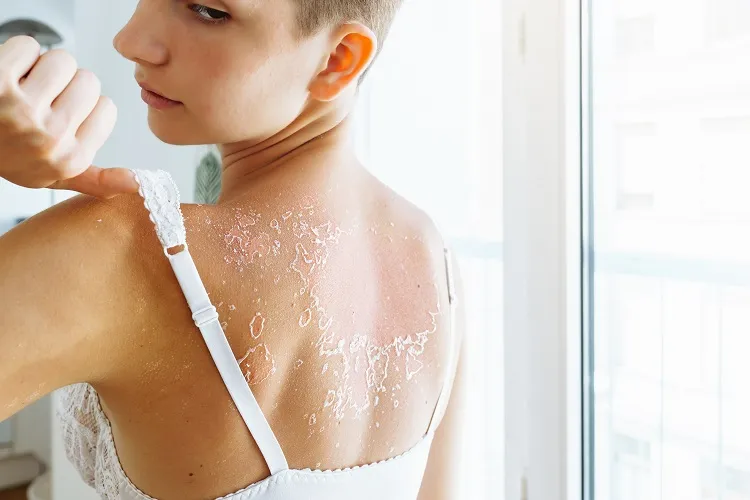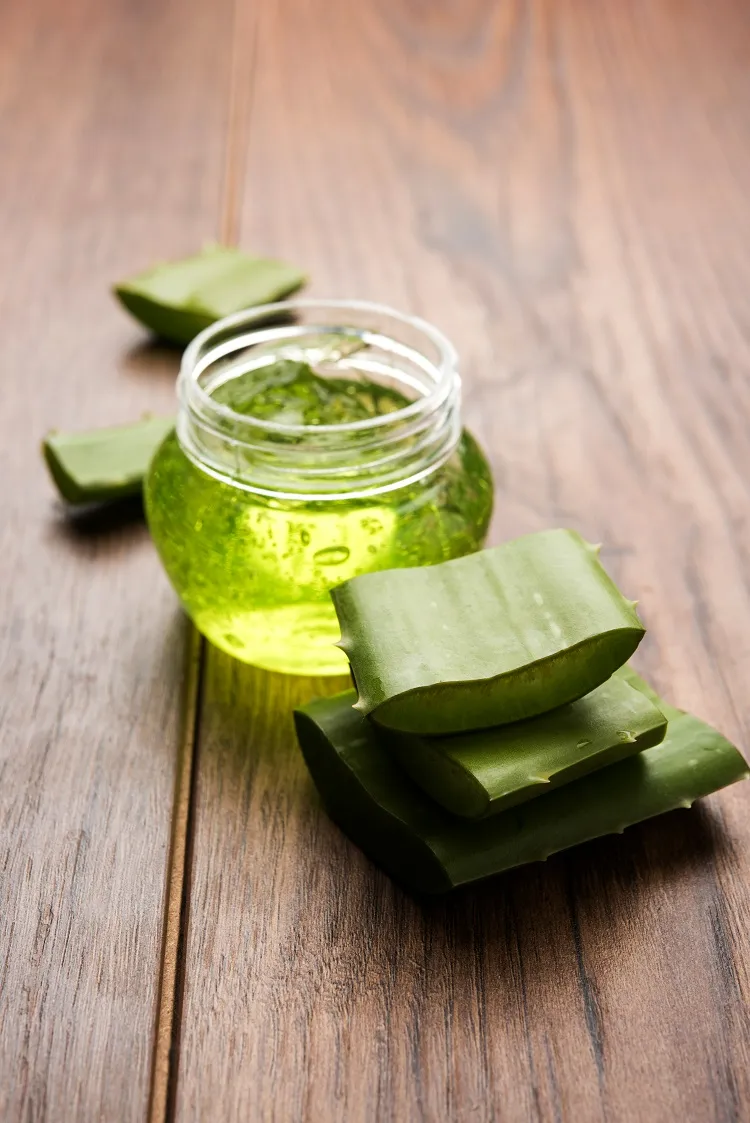I’m sure there’s one question we’ve all asked ourselves – should you pop blisters? If you’ve been laying in the sun for too long without wearing SPF, the chances of getting them are pretty high! So what do you do next? How do you treat them? Here’s everything you need to know about dealing with sunburn blisters at home!
Why did I get Blisters from a Sunburn?
Blisters are a way for your skin to protect itself from severe damage. When your skin is exposed to the sun for a long period without any SPF protection, a sunburn occurs. The severity of the burn can vary depending on the intensity of the sun and the amount of time you spent exposed to it. Usually, second-degree burns are when your skin begins to hurt severely and blisters start to form. This happens because the ultraviolet radiation (UV) from the sun has damaged both the outer layer of your skin and the one underneath it (epidermis and dermis).
Read also: Sun Burn on Black Skin – Treatment and All You Need to Know
Should You Pop Blisters from Sunburn?
The short answer is NO. I know their appearance is rather unpleasant and popping them is tempting, but it won’t help. This is your skin’s way of protecting itself from sun damage. If you do pop your blisters, you’re exposing yourself to a high chance of skin infection which will slow down the healing process even more. Sunburn blisters heal on their own. You must be patient and make sure you’re taking proper care of your skin in the meantime to aid the recovery process.
How do You Treat Sunburn Blisters at Home?
The first and most important thing – do NOT panic! The less you touch and scratch your blisters, the quicker they will heal! You can start by taking Ibuprofen. It will help relieve the pain and aid the healing process by reducing inflammation. To treat and soothe the painful blisters topically, you can try:
- A cool shower or a cold compress
- Pure Aloe Vera gel
- Applying Bulgarian yoghurt
- Drinking a lot of water
- Avoiding sun exposure at all costs
If the blisters have begun to pop on their own, you should immediately disinfect the area. Use cool water and unscented antibacterial soap to clean the skin. Once dry, apply Aloe Vera gel to the affected area and cover it loosely with a non-stick bandage.
Note: Do NOT use cotton balls to absorb liquid from the blisters. The fibres from the cotton will stick to the blisters, which can cause further infections.
How Long Does it Take for Sunburn Blisters to Heal?
Depending on the severity of your blisters, it can take from 2 days up to a week for them to begin to heal and fade. You may notice that the spots where the blisters were are turning either darker or lighter. These marks occur due to skin damage and will heal over time.
Are There Any Side Effects Of Getting Sunburn Blisters?
If you’re experiencing a strong physical reaction after the sunburn blisters have begun to form, you probably have sun poisoning. This is not a common occurrence, however, more severe cases of sun damage can lead to these unpleasant results. The symptoms of sun poisoning are:
- Feeling light-headed/dizzy
- Nausea
- Stomach ache
- Vomiting
- Fever
- Hot and cold flashes
If you start to get any of those symptoms make sure you’re drinking a lot of water and contact a medical expert ASAP.
How Can You Prevent Sunburn Blisters?
The first and most important thing you should do to prevent sunburn is to use SPF regularly. If you know that your skin is susceptible to sunburn, use SPF 50 and don’t forget to reapply at least every 3 hours. If you’re at the beach and you’ve swum after the first application of SPF, reapply as soon as you get out of the water. If you notice that your skin is beginning to turn red, this is your cue to hide in the shade – you’re getting a sunburn. Treat the area immediately with Aloe Vera gel to avoid further irritation.
Read also: Protect Yourself from UV Rays – Simple Steps and DIY Sunscreen Recipe
How can You Prevent a Heatstroke?
Getting a heatstroke is just as easy as it is unpleasant to experience. Heatstrokes occur after really long exposure to the sun when your body begins to overheat. Your body fails to control its body temperature, it begins to rise up rapidly and causes a severe headache and nausea. To prevent heatstroke you must protect your head from the sun at all times. Anything from a baseball cap to a wide-brim hat, a headscarf or a bandana that covers your head completely will be of help!



